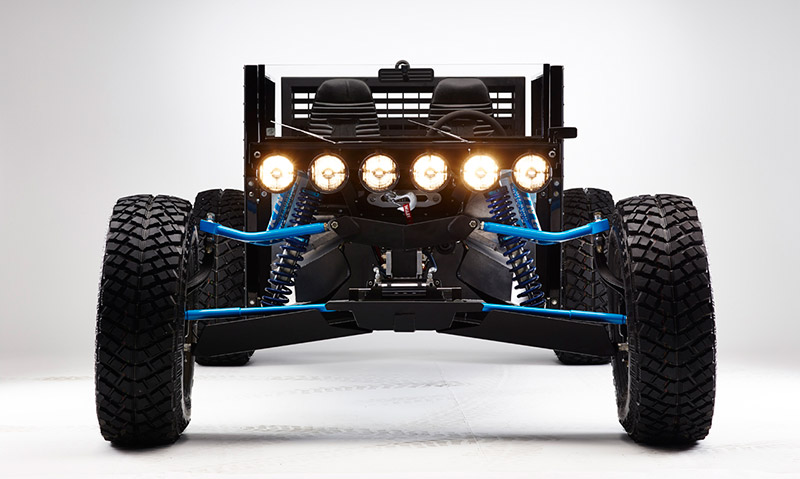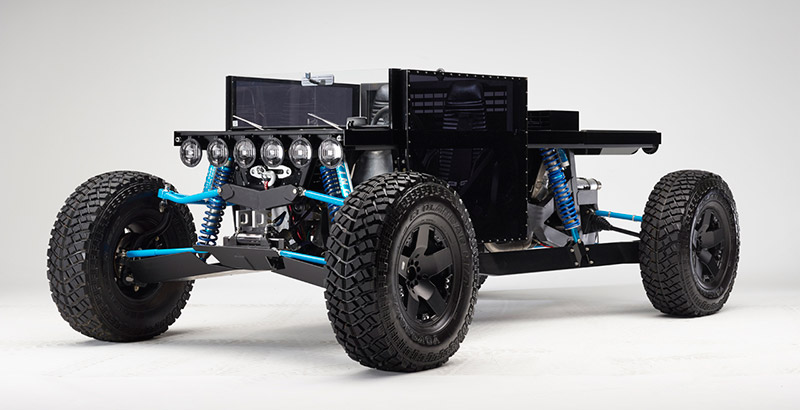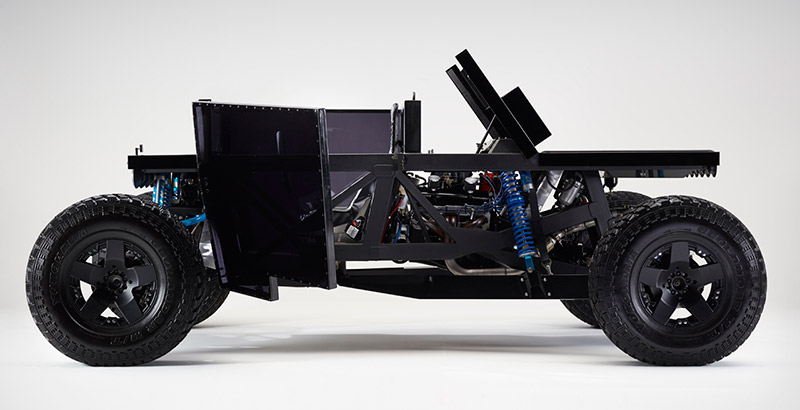
Joey Ruiter started his plans for developing an interestingly efficient green car many years back. As an industrial designer, Ruiter realized that he could apply his welding skills and technological expertise to enable the car-building process from junkyard electronic parts. Ruiter’s main qualm was to keep the Reboot Buggy simple yet sleek, creating an automobile that anyone can build with enough determination.
Drawing inspiration from the basically structured horse-drawn carriages of the 19th century, Ruiter designed the buggy to fit its industrial needs while performing on the road. He follows the rule of “form follows function,” while not building the car for the sake of human comfort. Ruiter’s goal was to strip a car down to its most primal form, making a buggy that can drive capably on roads, dunes, and other terrains.

For starters, Ruiter took a steel tube frame, 40-inch tires, an aluminum deck lid, and an independent suspension with 26 inches of wheel travel. The wheels are powered from a 470-horsepower block Chevrolet V8 engine that sends power through a three-speed automatic transmission. The engine was placed in the framework’s center, so the car would attain optimal balance while driving. Ruiter selected these materials for optimal traction while zooming on the road.
Even though these elements can categorize the buggy into a “car,” Ruiter claims that it does not quite fit all of the criteria. This is because all parts that construct the car are junkyard finds and second-hand materials.

The seating area of the car is not for people who look to bring the comfort of their living room on the road. The doors that open to two seats are made from black polycarbonate materials that he thought were reminiscent of the body of an Amish horse and buggy. The two lightweight seats are set close together, a small heater is included in the cockpit, and there is not an overhead roof covering. A small dashboard shows crucial operating information through a series of LED displays. There is no insulation installed to mute the noise of the engine, and it grumbles loudly over the slightly muffled exhaust.
Once all lights, mirrors, and required safety gear were installed on the buggy, the vehicle was officially licensed for actual public use. Ruiter encountered difficulty when first trying to insure the buggy. But now, the buggy is in full-fledged form, ready for use on the open road.
Advertisement
Learn more about Electronic Products Magazine





